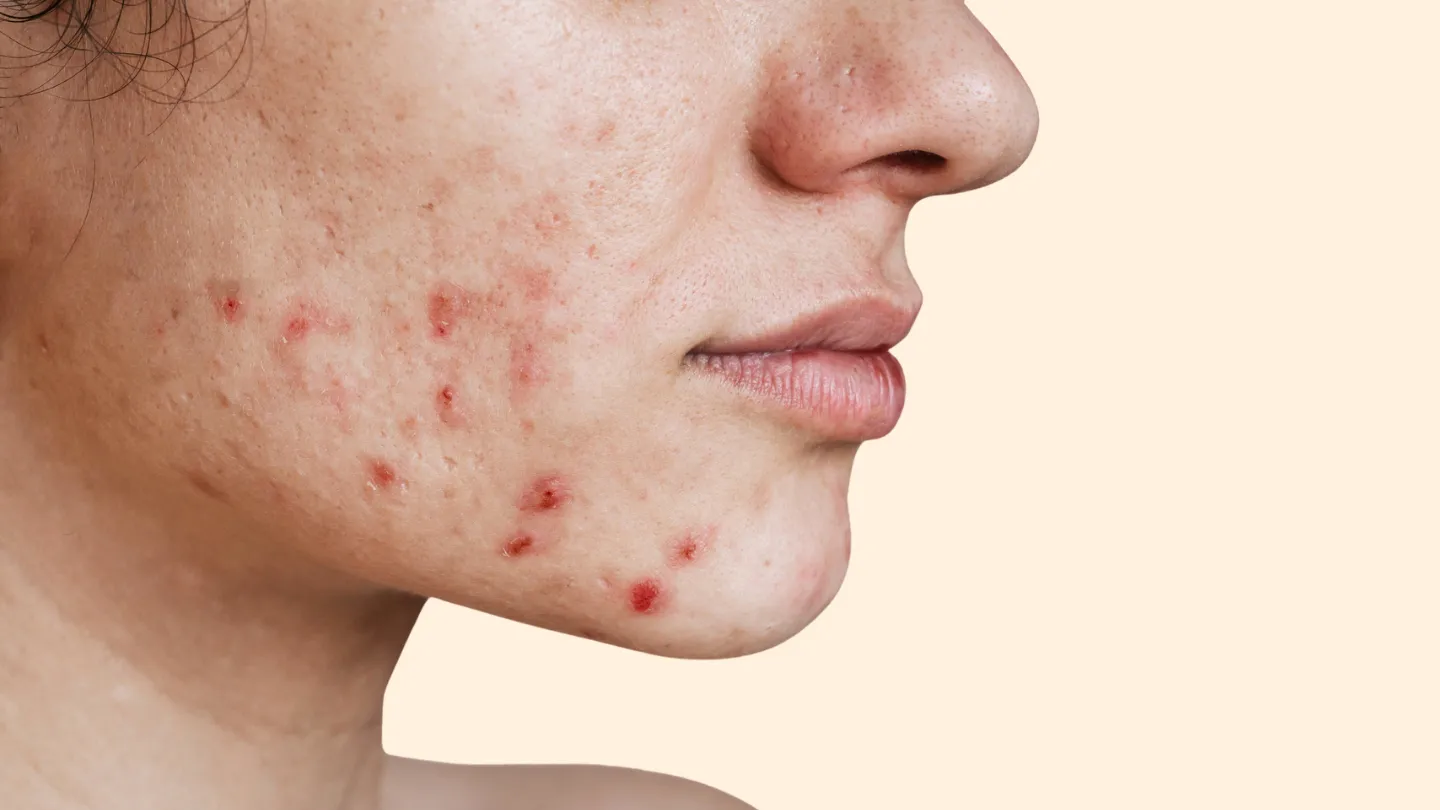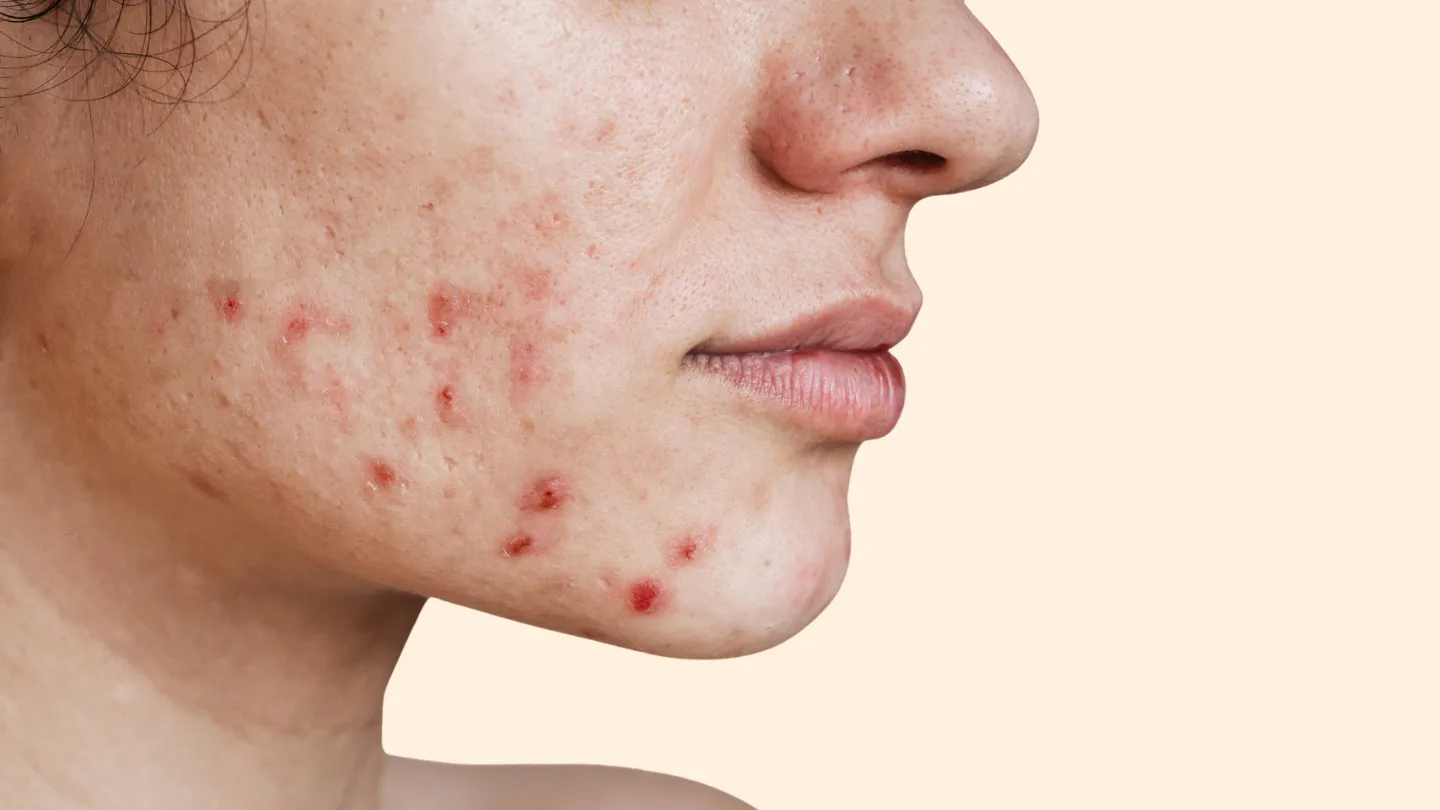Understanding Different Types of Acne
Acne outbreaks can occur in various forms, from small whiteheads to inflamed cystic bumps. To treat acne effectively, it's important to understand what's causing specific skin reactions and choose targeted skincare solutions. This guide will overview the most common acne types and how different face masks can address them.
Blackheads and Whiteheads
Blackheads and whiteheads both start when dead skin cells, oil, and bacteria clog a hair follicle. With whiteheads, the clog stays below skins surface. Blackheads open to the surface, exposing the plug to air which oxidizes it to a dark color.
Papules and Pustules
Papules are small, red, tender bumps without pus. When bacteria invade a clogged follicle, the body fights back with white blood cells forming pus. This results in inflamed, pus-filled pustules.
Nodules and Cysts
When acne inflammation goes deeper under the skin it leads to painful nodules and cysts. Nodules are large, solid pimples. Cysts contain pus and can cause scarring if not treated properly.
Choosing an Acne Face Mask by Skin Type
Since not all acne is equally severe or caused by the same factors, face masks should be selected based on your predominant skin type and needs.
Masks for Oily and Acne-Prone Skin
For those prone to blackheads, whiteheads, and inflamed breakouts, oil control is key. Clay masks soak up excess sebum and deep clean clogged pores. Charcoal masks also draw out impurities without over drying.
Masks for Sensitive Skin
If acne crops up due to sensitized skin, soothing ingredients like oats, aloe, and chamomile reduce redness and calm irritation. Stay away from abrasive scrubs and strong acids that can further inflame.
Masks for Dry Skin
When acne occurs in drier skin, nurturing hydration is important. Gel masks with hyaluronic acid attract moisture while avocado and shea butter deeply nourish parched skin.
Spot Treatments for Severe Acne
Salicylic acid and benzoyl peroxide are go-to ingredients for stubborn cystic acne or pustules. Use acne spot treatments containing these to dry up swollen blemishes fast.
Lifestyle Tips for Managing Acne
While face masks help treat existing acne, lifestyle measures reduce future breakouts. Here are some daily habits to improve acne across all skin types:
Cleanse Twice Daily
Washing morning and night removes dirt, impurities, excess oil, and makeup that clog pores. Use a gentle cleanser that wont strip skins moisture barrier.
Limit Touching Your Face
Hands transfer dirt and bacteria onto the face increasing inflammation. Try to keep hands away from the face as much as possible.
Watch Dietary Triggers
High glycemic foods, dairy, and processed ingredients can trigger hormonal changes sparking breakouts. Keep a food journal to pinpoint personal acne dietary causes.
Manage Stress Levels
Stress hormones like cortisol aggravate acne. Relaxation practices like meditation, yoga, massage, and sufficient sleep counteract stress before it impacts skin.
The Best Drugstore Face Masks for Different Acne Concerns
With all the acne mask options on the market, it can be hard to know where to start. Here is an overview of top-rated drugstore face masks for common acne complaints:
Clogged Pores and Blackheads:
Aztec Secret Indian Healing Clay
Inflammation and Redness:
Yes To Tomatoes Detoxifying Charcoal Mud Mask
Excess Oil and Shine:
Neutrogena Clear Pore Clay Mask
Sensitive Irritated Skin:
Freeman Feeling Beautiful Polishing Charcoal + Black Sugar Gel Mask
Dry Dehydrated Skin:
Garnier SkinActive Moisture Bomb Tissue Mask
Hormonal Cystic Acne:
Clean & Clear Advantage Acne Spot Treatment
Post-Acne Marks and Scarring:
Derma E Vitamin C Concentrated Serum Hydrating Mask
How to Maximize Face Mask Results
Using topical acne treatments only sporadically wont lead to lasting clear skin. To enhance their performance, build these best practices into your skincare routine:
1. Start with a Clean Canvas
Thoroughly cleanse skin before applying any mask so the ingredients can better penetrate.
2. Apply Evenly Avoiding Eyes and Lips
Dot mask all over face and smooth outward with fingers, a brush, or spatula avoiding sensitive areas.
3. Let it Fully Dry as Directed
Leave masks on for the recommended duration to completely dry and set.
4. Remove Gently Without Rubbing
Peel masks off carefully without pulling at skin. Splash with lukewarm water to remove residue.
5. Moisturize Afterwards
Replenish moisture after deep cleaning masks so skin doesnt get parched.
How Face Masks Fit With Other Acne Fighters
While an effective skincare tool, masks work best alongside other products fighting acne. Some key product pairings include:
Acne Face Washes
Cleanse away oil, dirt, and bacteria clogging pores daily.
BHA/AHA Acids
Exfoliate dead skin cells and debris inside pores.
Lightweight Moisturizers
Hydrate without aggravating acne by selecting oil-free formulas.
Spot Treatments
Salicylic acid and benzoyl peroxide ingredients target severe breakouts.
Following a complete anti-acne regimen achieves clearer, more balanced skin long-term. Be patient through potential purging phases as complexions acclimate.
FAQs
Can you use acne face masks daily?
Using intense acne masks too often can irritate skin. Limit potent clay and charcoal masks to 2-3 times a week. Gel masks with hydrating ingredients are gentler for daily use.
How long should you leave acne masks on?
Check manufacturer directions, but most acne face masks need 10-15 minutes to fully dry and set. Leaving masks on too long doesn't improve efficacy and may cause skin damage.
Can acne masks be used as spot treatment?
Look for acne spot treatment products formulated specifically for targeting individual breakouts with maximum strength ingredients. Using all over masks as spot treatments risks over drying.
What ingredients make the best acne face masks?
Clay, charcoal, salicylic acid, sulfur and tea tree oil are ideal acne fighting ingredients. Make sure masks also contain hydrating elements like aloe, hyaluronic acid, avocado or shea butter.
Disclaimer: This article is for informational purposes only and does not constitute medical advice. Always consult with a healthcare professional before starting any new treatment regimen.
Related Coverage
Want to get rid of annoying inner thigh blackheads? Learn what causes them and how to gently treat them for clear, smooth skin on your inner thighs....
Discover the power of natural oils to diminish acne scars. Explore the best oils for acne scarring, including rosehip seed, jojoba, argan, and tamanu, to promote healing and rejuvenate your skin....
Skin popping illegal drugs leads to distinct track mark scarring plus infections and overdose risks. But professional treatment can restore hope and skin health....
Skin popping refers to self-harm by intentionally damaging one's skin for photos shared online. This behavior is driven by trauma, mental illness and the quest for connection....
Retinoids, antibiotics, hormonal therapies and more - learn how the top prescription acne medications like Retin-A, Differin and Epiduo Forte help treat teenage breakouts....
Wondering if that bump is monkeypox vs acne? Learn key symptoms, when to worry, and how to get the right care quickly....
Discover the best moisturizers for fungal acne from gels, lotions and creams. Learn tips for using hydrating, anti-fungal products to clear up breakouts....
Treating teen acne requires proper cleansing, OTC/prescription medications, lifestyle adjustments, and scar treatment. See a dermatologist for severe cases....
Ashwagandha can sometimes trigger pesky acne breakouts. Discover potential reasons why ashwagandha leads to pimples, plus lifestyle tips and skincare solutions to control flare-ups....
Sulfur offers remarkable benefits for acne, including oil absorption, antimicrobial properties, and exfoliation. Discover its advantages for clear skin....







